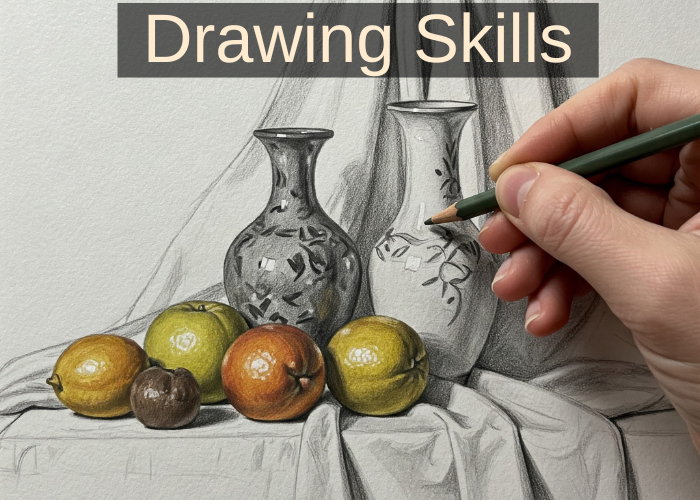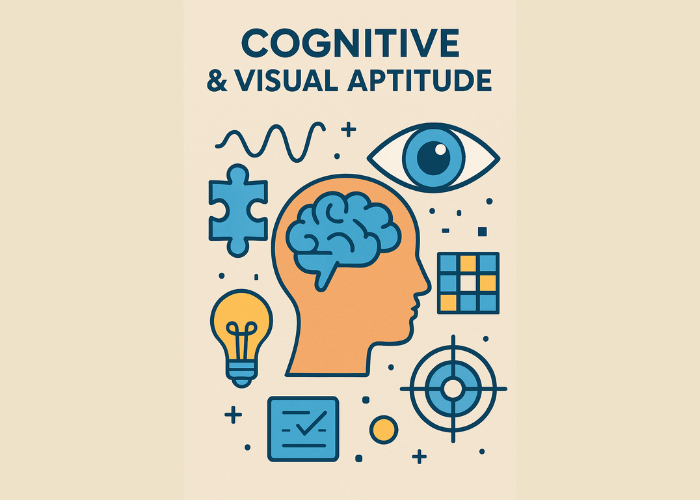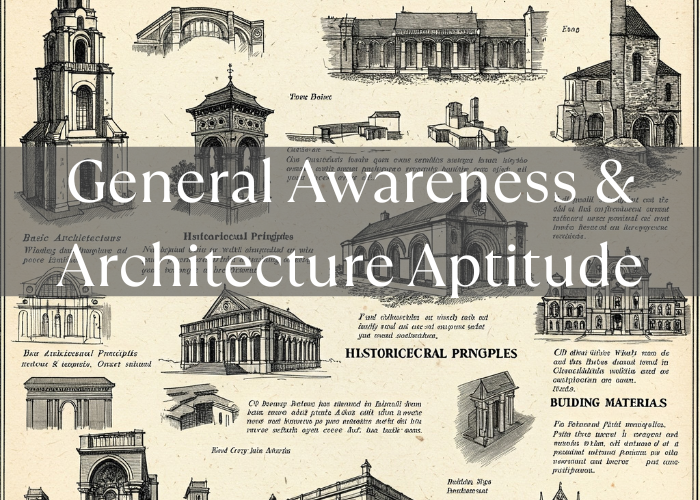Crack NATA with Creativity & Confidence
Join India’s most creative design test prep program at Design Dreamz Academy
Why Choose Design Dreamz for NATA
Powered by Konsult Creative
1-on-1 Mentorship
Get personal guidance tailored to your goals and progress.
Video Tutorials
Engaging tutorials that break down complex concepts with clarity.
Mock Test Papers
Practice with real exam-style papers and improve time management.
Study Materials
Carefully curated notes, design theory, and visual references.
Design Simulations
Hands-on creative tasks that mimic actual design entrance exams.
Personalized Feedback
Detailed critique and improvement tips to refine your skills.
The National Aptitude Test in Architecture (NATA) 2025, conducted by the Council of Architecture (CoA), is designed to assess candidates’ aptitude for architecture through various testing formats. The exam evaluates cognitive skills, visual perception, aesthetic sensitivity, logical reasoning, and critical thinking abilities.Careers360 Engineering+4Nata+4Proper Noun+4
📝 NATA 2025 Syllabus Overview
The NATA 2025 syllabus is structured into two main parts:
Part A: Drawing and Composition Test
This section assesses candidates’ drawing and visualization skills through the following tasks:
Composition and Colour: Creating suitable compositions for various situations and appropriately coloring them.CollegeBatch.com+1Shiksha+1
Sketching and Composition (Black and White): Ability to draw, visualize, and depict situations involving buildings, components, people, environments, and products with an understanding of scale, proportions, textures, shades, and shadows.Shiksha+1CollegeBatch.com+1
3D Composition: Creating interesting 3D compositions for given situations using provided kits.Shiksha+1CollegeBatch.com+1
Each task in Part A carries specific marks:Shiksha+1Proper Noun+1
Composition and Colour: 25 marks
Sketching and Composition (Black and White): 25 marksCollegeBatch.com+6Shiksha+6Nata+6
3D Composition: 30 marksShiksha
Part B: Multiple Choice Questions (MCQs)
This section evaluates candidates’ general aptitude and knowledge through various topics:PW Live
Visual Reasoning: Understanding and reconstructing 2D and 3D compositions, knowledge about their composition and technical concepts.CollegeBatch.com+1Shiksha+1
Logical Derivation: Decoding situations, compositions, contexts, and generating meaning.CollegeBatch.com+1Shiksha+1
General Knowledge of Architecture and Design: Awareness of architecture and design, current issues, important buildings, historical progression, and innovations in materials and construction technology.CollegeBatch.com+1Shiksha+1
Language Interpretation: Ability to correctly and logically interpret the meaning of words and sentences, and understand English grammar.Shiksha
The MCQ section comprises:YouTube+7CollegeBatch.com+7Careers360 Engineering+7
Visual Reasoning: 30 questionsCareers360 Engineering
Logical Derivation: 15 questionsPW Live+4Proper Noun+4Careers360 Engineering+4
📘 Additional Topics Covered
Beyond the primary sections, NATA 2025 also includes questions from the following areas:PW Live
MathematicsProper Noun+3Careers360 Engineering+3Proper Noun+3
Physics and GeometryAsk Shiksha+6Proper Noun+6Proper Noun+6
Language and InterpretationCollegeBatch.com+6Proper Noun+6PW Live+6
Elements and Principles of DesignCareers360 Engineering+4Proper Noun+4PW Live+4
Aesthetic SensitivityNata+5PW Live+5Careers360 Engineering+5
Colour TheoryAsk Shiksha+8Careers360 Engineering+8Proper Noun+8
Lateral Thinking and Logical ReasoningShiksha+5Careers360 Engineering+5Proper Noun+5
Visual Perception and CognitionProper Noun+2Careers360 Engineering+2Proper Noun+2
Graphics and ImageryProper Noun+5Proper Noun+5Careers360 Engineering+5
Building Anatomy and Architectural VocabularyCareers360 Engineering+2Proper Noun+2Proper Noun+2
Basic Techniques of Building Construction and Knowledge of MaterialsCareers360 Engineering+2Proper Noun+2Proper Noun+2
General Knowledge and Current AffairsNata+3Proper Noun+3Proper Noun+3
The selection criteria for NATA (National Aptitude Test in Architecture) are defined by the Council of Architecture (CoA) and are primarily used for admission into 5-year B.Arch (Bachelor of Architecture) programs in various institutions across India.
✅ Eligibility Criteria for NATA
Before discussing selection, candidates must meet the minimum eligibility:
Academic Qualification:
Must have passed 10+2 or equivalent with Mathematics as a compulsory subject.
Or, completed 10+3 Diploma with Mathematics as a compulsory subject.
Minimum Marks:
Must secure at least 50% aggregate marks in Physics, Chemistry, and Mathematics (PCM) and 50% aggregate marks overall (relaxable for reserved categories as per rules).
🎯 Selection Criteria / Admission Process
Qualifying the NATA Exam:
You must qualify NATA with the minimum cut-off marks decided by CoA each year.
Typically, the qualifying marks are around 70 out of 200 (subject to change).
Admission through Counseling:
CoA does not conduct centralized counseling. Admissions are done individually by colleges/universities based on:
NATA score
12th/Diploma academic performance
Seat availability & reservation policies of the institution
Merit List Preparation:
Institutions prepare a merit list combining NATA score and qualifying exam (12th/Diploma) marks.
Weightage can vary by college, but many use:
50% weightage to NATA
50% weightage to qualifying exam marks
Cut-Offs:
Each institute may release its own cut-off marks or rank lists depending on the number of applicants and seats.
🔁 Important Notes:
Even if you score well in NATA, you must also meet the academic eligibility criteria.
No negative marking in NATA, which allows candidates to attempt all questions.
Candidates can appear for multiple NATA attempts, and the best score is considered.
Top 20 Architecture Colleges – NATA Cutoffs & Rank Range
| No. | College Name | Expected NATA Cutoff (2025) | Approximate Rank Range |
|---|---|---|---|
| 1 | Sir J.J. College of Architecture, Mumbai | 105 | 1 – 1500 |
| 2 | School of Planning and Architecture, Delhi | 115 | 1 – 800 |
| 3 | School of Planning and Architecture, Bhopal | 108 | 800 – 1300 |
| 4 | School of Planning and Architecture, Vijayawada | 106 | 1000 – 1400 |
| 5 | IIT Roorkee (Architecture via JEE Advanced) | — | — (Not via NATA) |
| 6 | CEPT University, Ahmedabad | 100 | 1500 – 1800 |
| 7 | NIT Calicut (via JEE Main Paper 2) | — | — (Not via NATA) |
| 8 | RV College of Architecture, Bangalore | 100 | 1300 – 1700 |
| 9 | Chandigarh College of Architecture, Chandigarh | 100 | 1500 – 1900 |
| 10 | Faculty of Architecture, Manipal University | 102 | 1400 – 1700 |
| 11 | Faculty of Architecture, Jamia Millia Islamia, Delhi | 90 | 2200 – 2600 |
| 12 | Sushant School of Art and Architecture, Gurgaon | 95 | 1800 – 2200 |
| 13 | BMS College of Architecture, Bangalore | 88 | 2000 – 2500 |
| 14 | SRM Institute of Science and Technology, Chennai | 90 | 2300 – 2700 |
| 15 | MEASI Academy of Architecture, Chennai | 85 | 2500 – 3000 |
| 16 | MBS School of Planning and Architecture, Delhi | 85 | 2500 – 3100 |
| 17 | Dr. M.G.R. Educational & Research Institute, Chennai | 80 | 3100 – 3500 |
| 18 | GITAM School of Architecture, Visakhapatnam | 82 | 2900 – 3300 |
| 19 | Hindustan University, Chennai (School of Architecture) | 80 | 3100 – 3600 |
| 20 | REVA University, Bangalore | 85 | 2500 – 3000 |
🔍 Notes:
Some prestigious architecture institutes like IIT Roorkee and NITs admit through JEE Advanced or JEE Main Paper 2, not NATA.
NATA qualifying marks are usually 70/200 minimum, but cutoffs for admission are much higher at top institutes.
These ranks are approximate and can vary depending on your category, state quota, and year-to-year competition.
Learning Methodology for NATA (National Aptitude Test in Architecture) to help aspirants prepare effectively for the exam:
🧠 LEARNING METHODOLOGY FOR NATA 2025
🔹 1. Understand the Exam Pattern
Mode: Online (Part A – Cognitive, Part B – Drawing)
Duration: 3 hours
Total Marks: 200
Sections:
Part A: Aptitude, Mathematics, Logical Reasoning, General Knowledge, and Visual/Cognitive Skills
Part B: Drawing and Observation-based Questions
🔹 2. Divide Preparation into 4 Key Domains
📐 A. Drawing & Visualization (Part B)
Practice freehand drawing, perspective, composition, shading, and object proportions.
Improve speed and accuracy.
Practice past year drawing questions (composition, scene drawing, 2D/3D transformation, etc.)
🧠 B. Cognitive & Visual Aptitude (Part A)
Solve puzzles, pattern matching, symmetry, mirror and rotation-based questions.
Practice mental ability, analytical reasoning, and visual perception.
Use apps or books for non-verbal reasoning.
🧮 C. Mathematics (Class 10–12 level)
Focus on geometry, mensuration, algebra, trigonometry, coordinate geometry.
Solve mock tests to get comfortable with application-based questions.
🌍 D. General Awareness & Architecture Aptitude
Read about famous buildings, architectural styles, Indian & global architects.
Stay updated on basic environmental studies, materials, and urban design.
✨ The Design Dreamz Approach
At Design Dreamz, we believe that great designers are made through curiosity, creativity, and independent thinking — not by rote learning.
Unlike traditional coaching centers, we don’t just teach; we inspire students to learn, explore, and innovate on their own terms.
Our approach is built around self-paced, concept-driven learning with expert guidance whenever needed.
We offer:
🎨 Engaging Video Tutorials crafted by top design mentors.
📚 Extensive Study Materials covering every topic across NID, NIFT, UCEED, and NATA syllabi.
🧠 Practice Tests with Detailed Solutions to strengthen concepts.
🤝 Optional Live Sessions for doubt-clearing, portfolio review, and personalized feedback.
🚀 One-on-One Mentorship sessions with industry experts to nurture each student’s unique potential.
At Design Dreamz, you are not just preparing for an exam — you are building the skills to think, create, and succeed in the world of design.
Learn independently. Create fearlessly. Dream boldly.
Portfolio Guidance
Prepare a collection of your best creative works.
Learn what to include, how to present, and how to talk about your work during the interview.
✅ What we’ll cover:
Selecting and organizing artworks.
Creating short projects or thematic artworks.
Professional presentation techniques.
Hear From Our Stars
VIDEO TUTORIALS | EXTENSIVE STUDY TESTS WITH ANSWERS EXPLAINED | ONE-ON-ONE PERSONAL CLASSES
Self-Study, Group Learning, or Personalized Mentorship — The Choice is Yours

📐 Drawing & Visualization
Learn about major design movements, famous designers, art history, architecture, fashion, and current affairs in the world of design.
Get easy-to-follow video lessons, extensive study materials with key facts and timelines, and practice tests with detailed answer explanations to sharpen your awareness, and get extra support with an optional one-on-one live interactive class.

🧠 Cognitive & Visual Aptitude
Master the basics of sketching, perspective, object drawing, human figures, storyboarding, and idea visualization.
Learn through video tutorials, step-by-step study material, practice tests with answer explanations, and an optional one-on-one live class for personal guidance.

🧮 Mathematics (Class 10–12 level)
Sharpen your skills in problem-solving, pattern recognition, critical analysis, and logical reasoning.
Learn through video lessons, comprehensive study materials, practice tests with detailed solutions, and get extra support with an optional one-on-one live interactive class.

🌍 General Awareness & Architecture Aptitude
Unlock your creative potential with activities focused on idea generation, storytelling, design exploration, and imaginative thinking.
Master the concepts with video lessons, extensive study materials, tests with explained answers, and enhance your skills further with an optional one-on-one live interactive session.
SELF LEARNER PLAN
Best plan for highly motivated independent learnersINTERACTIVE LEARNER PLAN
Perfect if you want a mix of self-learning + group guidancePERSONALISED LEARNER PLAN
Ideal for personal attention and focused progressFast Track Plans
(1 month | 3 Months)
Please contact the Programme Office on +91 9902739994
Join the NID Topper’s Club – Enroll Now”
“Schedule a free creative consultation with us. Discover your path, understand the exam, and ask all your questions. No pressure — just guidance.”

